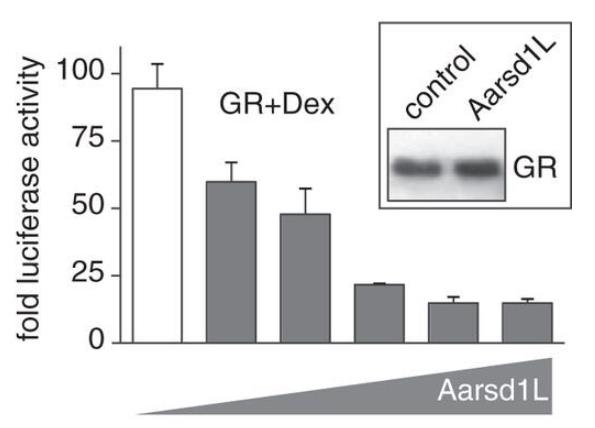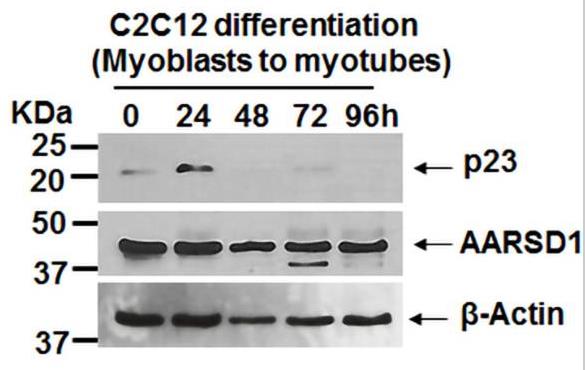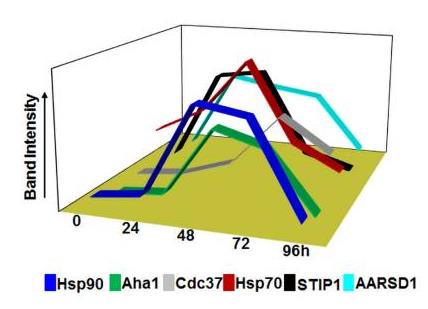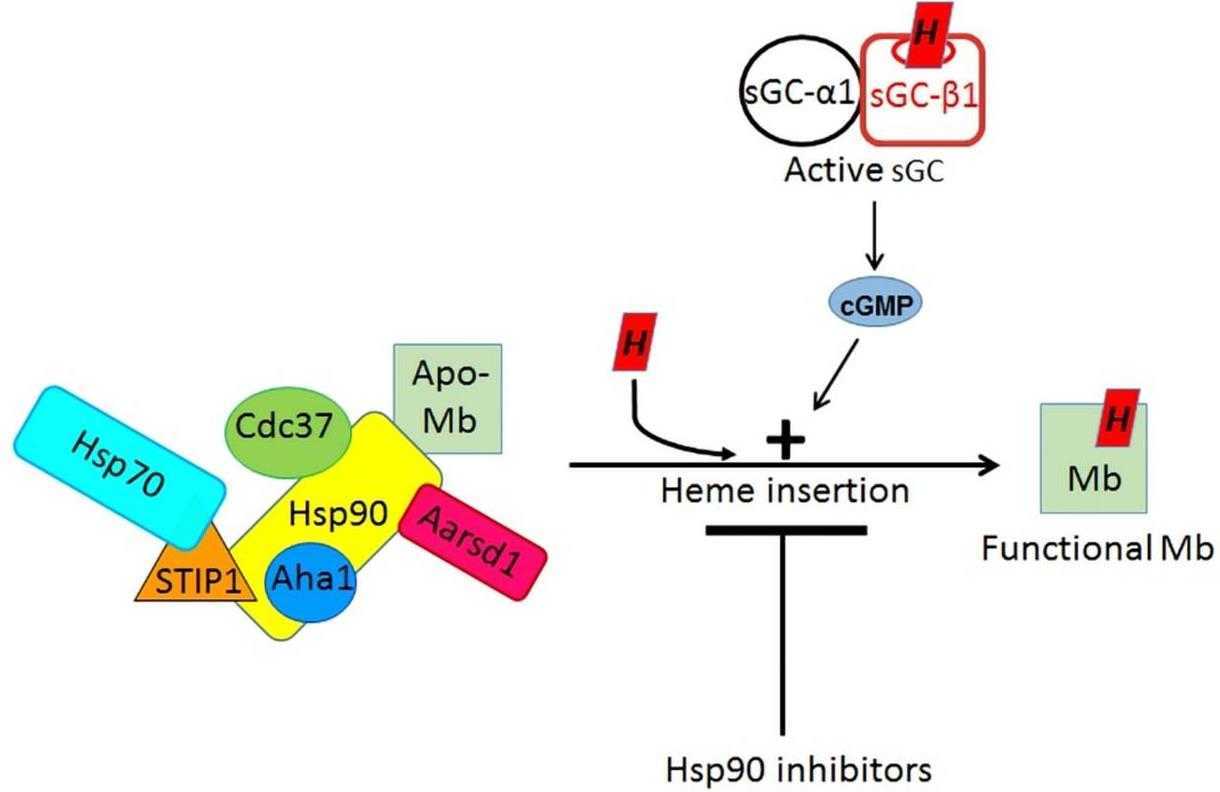Recombinant Human AARSD1 protein(Thr176-Glu525), His-tagged
| Cat.No. : | AARSD1-502H |
| Product Overview : | Recombinant Human AARSD1 (Q9BTE6-2) (Thr176-Glu525) was expressed in E. coli with a polyhistidine tag at the N-terminus. |
- Specification
- Gene Information
- Related Products
- Case Study
- Application
- Download
| Species : | Human |
| Source : | E.coli |
| Tag : | His |
| Protein Length : | 176-525 a.a. |
| Form : | Lyophilized from sterile 20mM Tris, 500mM NaCl, pH 8. 5. Normally 5 % - 8 % trehalose, mannitol and 0.01% Tween80 are added as protectants before lyophilization. |
| Molecular Mass : | The recombinant human AARSD1 comprises 365 amino acids and has a predicted molecular mass of 40.5 kDa. The apparent molecular mass of the protein is approximately 40 kDa in SDS-PAGE under reducing conditions due to glycosylation. |
| Purity : | > 90 % as determined by SDS-PAGE |
| Storage : | Samples are stable for up to twelve months from date of receipt at -20°C to -80°C. Store it under sterile conditions at -20°C to -80°C. It is recommended that the protein be aliquoted for optimal storage. Avoid repeated freeze-thaw cycles. |
| Reconstitution : | It is recommended that sterile water be added to the vial to prepare a stock solution of 0.2 ug/ul. Centrifuge the vial at 4°C before opening to recover the entire contents. |
| Gene Name | AARSD1 alanyl-tRNA synthetase domain containing 1 [ Homo sapiens ] |
| Official Symbol | AARSD1 |
| Synonyms | AARSD1; alanyl-tRNA synthetase domain containing 1; alanyl-tRNA editing protein Aarsd1; MGC2744; alanyl-tRNA synthetase domain-containing protein 1; |
| Gene ID | 80755 |
| mRNA Refseq | NM_001136042 |
| Protein Refseq | NP_001129514 |
| MIM | 613212 |
| UniProt ID | Q9BTE6 |
| ◆ Recombinant Proteins | ||
| AARSD1-758HF | Recombinant Full Length Human AARSD1 Protein, GST-tagged | +Inquiry |
| AARSD1-1002Z | Recombinant Zebrafish AARSD1 | +Inquiry |
| AARSD1-43R | Recombinant Rat AARSD1 Protein, His (Fc)-Avi-tagged | +Inquiry |
| AARSD1-023H | Recombinant Human AARSD1 Protein, GST-tagged | +Inquiry |
| AARSD1-502H | Recombinant Human AARSD1 protein(Thr176-Glu525), His-tagged | +Inquiry |
| ◆ Cell & Tissue Lysates | ||
| AARSD1-9156HCL | Recombinant Human AARSD1 293 Cell Lysate | +Inquiry |
Case 1: Echeverría PC, et al. Mol Cell Biol. 2016
Hsp90 is a key player in a group of molecular machines that manage a lot of the proteins in a cell. There are actually two versions of Hsp90 in most mammalian cells, and they work with 40 to 50 different assistants, called cochaperones, which are controlled by various modifications after protein synthesis. The research shows that Hsp90 changes its setup when muscles develop. This isn't just a side effect but might actually help drive all the protein changes that happen as muscles form. When muscle cells develop from myoblasts to myotubes, Hsp90α fades away and Hsp90β takes over, as it's the only one that partners with the new muscle-specific cochaperone Aarsd1L. If Hsp90α is kept or Aarsd1L is reduced, muscle cell development is disrupted. During this process, Aarsd1L takes over from another cochaperone, p23, reducing the activity of the glucocorticoid receptor, which is important for muscle function. This switch protects muscle cells from the harmful effects of excess glucocorticoids, which can cause muscle loss.

Fig1. Immunoblot showing the expression of Aarsd1 isoforms.

Fig2. Inhibition of GR activity, induced by 10 nM Dex, by increasing levels of Aarsd1L.
Case 2: Ghosh A, et al. FASEB J. 2019
The process of myoglobin (Mb) maturing in muscle cells involves getting heme inserted into it as a final step. Researchers looked into how heat shock protein 90 (Hsp90) helps with this in muscle cells. They found that Hsp90 partners up with heme-free Mb and helps add heme into it using ATP. As muscle cells develop, this Hsp90 and Mb duo teams up with other helper proteins like Hsp70 and Aarsd1. This collaboration seems to play a key role in helping myoglobin mature and function during muscle formation, especially when a particular cell signaling pathway (sGC-cGMP) is active.

Fig1. Representative Western blot indicating expression of hsp90 and the indicated cochaperons.

Fig2. Densitometry of chaperons/cochaperons bound to Mb.
Recombinant Human AARSD1 protein is a scientifically engineered version of the naturally occurring AARSD1 protein. This protein is known for its role in the cellular process of protein biosynthesis, specifically in the editing of incorrectly charged tRNA(Ala) molecules. The recombinant form, expressed in E. coli and tagged with a His label, is utilized for various research applications due to its functional and structural properties. AARSD1 is also implicated in maintaining the fidelity of translation, a critical aspect of protein synthesis. The study of this protein is essential for understanding the nuances of aminoacyl-tRNA synthetase function and its implications in human health and disease.
Recombinant Human AARSD1 protein is making waves in both research and industry because it's become quite the handy tool. In the scientific world, researchers are using it to explore how proteins synthesize within cells, which is crucial for understanding diseases and developing new treatments. On the industrial side, this protein plays a part in creating better diagnostic methods and therapies, helping to improve the way we detect and manage various health conditions. Overall, the versatility of Recombinant Human AARSD1 makes it a valuable asset in both understanding complex biological processes and enhancing health technologies.

Fig1. Model of the Mb maturation process. (Arnab Ghosh, 2019)
Not For Human Consumption!
Inquiry
- Reviews
- Q&As
Ask a Question for All AARSD1 Products
Required fields are marked with *
My Review for All AARSD1 Products
Required fields are marked with *
Inquiry Basket


